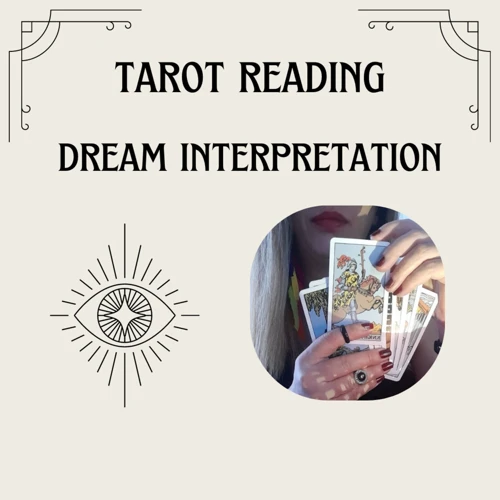Dreams are mysterious and intriguing, often leaving us with questions about their meaning and significance. Many different theories and approaches have been developed to interpret dreams and gain insights into the unconscious mind. In this article, we delve into the world of Gestalt Therapy and explore how it can be used as a powerful tool in understanding and interpreting dreams. Gestalt Therapy focuses on the here and now, emphasizing awareness, integration, and personal growth. By incorporating Gestalt principles into dream interpretation, individuals can gain deeper insights into their dreams and uncover hidden messages that guide them in their waking lives. So, let’s embark on a journey of discovering the transformative potential of Gestalt Therapy in unlocking the mysteries of our dreams.
Contents
- Understanding Gestalt Therapy
- Interpreting Dreams with Gestalt Therapy
- Case Studies
- Benefits of Using Gestalt Therapy in Dream Interpretation
- Conclusion
-
Frequently Asked Questions
- What makes Gestalt Therapy unique?
- Can Gestalt Therapy be used for dream interpretation?
- How does Gestalt Therapy view dreams?
- What role do symbols play in dream interpretation using Gestalt Therapy?
- Can Gestalt Therapy help in resolving recurring nightmares?
- Does Gestalt Therapy involve interpreting dreams literally?
- Is dream journaling helpful in Gestalt Therapy?
- Can Gestalt Therapy help with understanding dream emotions?
- Does Gestalt Therapy explore the dialogue between dream characters?
- Can Gestalt Therapy be integrated with other approaches to dream interpretation?
- References
Understanding Gestalt Therapy

Gestalt Therapy, derived from the German word meaning “whole,” is a holistic and experiential approach to therapy that focuses on self-awareness, personal growth, and integration of different aspects of oneself. It emphasizes the importance of understanding the present moment and the individual’s role in it. In Gestalt Therapy, the therapist and client work together to explore thoughts, feelings, and behaviors in order to gain a deeper understanding of underlying patterns and unresolved issues. A key principle of Gestalt Therapy is the concept of “here and now,” which encourages individuals to pay attention to their immediate experiences and emotions. This therapy approach views individuals as a whole, interconnected entity rather than just a collection of separate parts. The goal is to help individuals develop self-acceptance, build authentic relationships, and achieve personal fulfillment. Understanding the principles of Gestalt Therapy is crucial in not only applying it to dream interpretation but also implementing it as a powerful therapeutic modality for personal growth and well-being.
What is Gestalt Therapy?
Gestalt Therapy is a form of psychotherapy that focuses on the individual’s present experience and emphasizes self-awareness, integration, and personal growth. Stemming from the German word for “whole,” Gestalt Therapy views individuals as interconnected beings, not just a collection of separate parts. It recognizes that every person is unique and complex, and that their thoughts, feelings, and behaviors are shaped by their environment and past experiences. This approach is guided by the belief that individuals have the inherent capacity to understand themselves and find their own solutions to problems. Instead of solely focusing on the content of one’s thoughts or on analyzing the past like approaches such as Freudian dream analysis, Gestalt Therapy places great importance on the individual’s experience in the present moment. It encourages individuals to fully immerse themselves in their current thoughts, emotions, and sensations. By exploring and understanding their immediate experiences, individuals can gain insight into their patterns, beliefs, and unresolved issues. This self-awareness can lead to personal growth, increased self-acceptance, and the ability to make healthier choices in life. Gestalt Therapy is a humanistic and experiential therapy that empowers individuals to take responsibility for their own well-being and supports them in creating meaningful and fulfilling lives. Understanding the essence of Gestalt Therapy is fundamental in applying its principles to interpreting dreams and utilizing dream work techniques as a powerful tool for self-exploration and growth.
Key Principles of Gestalt Therapy
There are several key principles that form the foundation of Gestalt Therapy, which are essential to understand in order to effectively utilize this approach in dream interpretation. These principles include:
1. Awareness: Gestalt Therapy emphasizes the importance of self-awareness and staying present in the moment. By bringing attention to our thoughts, emotions, and physical sensations, we gain a deeper understanding of ourselves and our experiences.
2. Responsibility: This principle highlights the idea that individuals are responsible for their own thoughts, feelings, and actions. It encourages taking ownership of personal experiences and choices, rather than blaming external factors.
3. Here and Now: The focus on the present moment is a fundamental aspect of Gestalt Therapy. It encourages individuals to explore their immediate experiences and engage fully in the current situation, rather than dwelling on the past or worrying about the future.
4. Holism: Gestalt Therapy views individuals as whole beings, consisting of interconnected parts. It recognizes the importance of considering the mind, body, emotions, and environment as integral components in understanding oneself and others.
5. Contact: Contact refers to the way individuals connect with themselves and the world around them. Gestalt Therapy emphasizes the importance of developing authentic connections and engaging in healthy, meaningful relationships.
By embracing these key principles, individuals can foster personal growth, improve self-awareness, and gain a deeper understanding of their dreams. The principles of Gestalt Therapy serve as a valuable framework for interpreting dream symbols, exploring dream dialogues, and utilizing dream work techniques. They provide a solid foundation for incorporating Gestalt Therapy into the practice of dream interpretation, enabling individuals to uncover hidden meanings, insights, and personal transformations. To enhance the dream interpretation process further, individuals may consider utilizing a dream journaling practice, which can aid in capturing and reflecting upon dream experiences, leading to greater emotional well-being and self-discovery.
Interpreting Dreams with Gestalt Therapy

Dreams play a significant role in Gestalt Therapy, serving as a doorway to the unconscious mind and providing valuable insights into one’s emotions, desires, and unresolved issues. Gestalt Therapy recognizes that dreams are a reflection of the individual’s present experience and can be seen as a form of self-expression and problem-solving mechanism. Interpreting dreams through the lens of Gestalt Therapy involves examining the symbols, emotions, and dialogues present in the dream and understanding their significance in relation to the dreamer’s waking life. By exploring dreams with a Gestalt perspective, individuals can gain a deeper understanding of themselves, enhance self-awareness, and uncover hidden conflicts or unmet needs that may contribute to emotional distress or personal growth. It is important to note that Gestalt Therapy does not rely on a universal set of dream symbols but instead encourages the dreamer to explore and uncover personal meanings and associations. Through dream interpretation, individuals can access a wealth of valuable information that can contribute to their emotional health and personal development.
Importance of Dreams in Gestalt Therapy
The importance of dreams in Gestalt Therapy cannot be overstated. Dreams are considered valuable sources of information and insight into one’s inner world and unconscious mind. In Gestalt Therapy, dreams are seen as a direct reflection of an individual’s thoughts, emotions, desires, conflicts, and unresolved issues. They provide a window into the deeper layers of the self, allowing for self-exploration and self-discovery. Dreams often contain symbols, metaphors, and images that can reveal hidden aspects of one’s psyche and bring awareness to unresolved conflicts. By exploring and understanding the symbolism and meaning behind dreams, individuals can gain a deeper understanding of their own inner workings and gain insight into their current challenges and aspirations.
Dreamwork in Gestalt Therapy involves a collaborative process between the therapist and the individual to explore and unravel the layers of the dream. The therapist encourages individuals to immerse themselves in the dream experience, exploring the emotions, images, and sensations that arise. The focus is on the present moment experience of the dream rather than dissecting it analytically. This process allows for increased self-awareness, integration, and personal growth.
Understanding the importance of dreams in Gestalt Therapy can lead to a greater appreciation for the role dreams play in our emotional health and well-being. Dreams can serve as a rich source of information that can guide individuals towards a more fulfilling and authentic life. By tapping into the wisdom of dreams, individuals can gain valuable insights, resolve inner conflicts, and develop a deeper sense of self. To explore more on the significance of dreams in psychological well-being, you can read this article on exploring dreams and emotional health. However, it is important to note that Gestalt Therapy differs from Freudian Dream Analysis in its approach to dream interpretation. While both approaches acknowledge the significance of dreams, they have different theoretical foundations and methodologies.
Steps to Interpret Dreams using Gestalt Therapy
- Dream Recall: The first step in interpreting dreams using Gestalt Therapy is to improve dream recall. Keeping a dream journal by your bedside and recording your dreams as soon as you wake up can help enhance your ability to remember the details. It is important to write down everything you can remember, including emotions, scenes, characters, and any significant symbols or metaphors that stood out. This process of actively engaging with your dreams allows for a deeper exploration of the content.
- Exploring Dream Symbols: Once you have documented your dreams, the next step is to identify and explore the symbols present in the dream. Gestalt Therapy recognizes that each symbol holds personal meaning to the dreamer. Reflect on the symbols and ask yourself questions like “What does this symbol represent to me?” or “What emotions arise when I think of this symbol?” Pay attention to any visceral or emotional responses that arise, as they can provide valuable insight into the underlying significance of the symbols.
- Engaging in Dream Dialogues: Another important step is engaging in dream dialogues. This involves taking on the different roles or perspectives present in the dream and having an imaginary conversation with them. For example, if you dreamt of an intimidating figure, imagine yourself speaking to this figure and inquire about its purpose or message. By engaging in these dialogues, you can gain a deeper understanding of the different parts of yourself represented in the dream and uncover any unresolved conflicts or desires.
- Utilizing Dream Work Techniques: In Gestalt Therapy, various dream work techniques are employed to gain further insights. One such technique is “dream re-entry,” where individuals revisit a dream and imagine different outcomes or resolutions. This allows for a sense of closure and can promote personal growth. Another technique is “amplification,” which involves exploring the symbolism and meanings attached to dream images. By amplifying the symbols, individuals can uncover underlying themes and connections to their waking life experiences. These techniques help to deepen the exploration of the dream and bring about a greater understanding of its message.
By following these steps, individuals can effectively utilize Gestalt Therapy in interpreting their dreams. It is important to remember that dream interpretation is a deeply personal process, and each individual’s experience will be unique. The goal of Gestalt Therapy is to foster self-awareness and facilitate personal growth by engaging with the rich symbolism and messages present in our dreams. For more traditional approaches to dream analysis, you may also explore Freudian Dream Analysis.
Case Studies

Case studies provide valuable insights into how Gestalt Therapy can be applied in the interpretation of dreams. Let’s explore three examples that showcase different techniques and approaches. In the first example, a client presents a recurring symbol of a butterfly in their dreams. Through Gestalt Therapy, the therapist encourages the client to engage in a dialogue with the butterfly, exploring its significance and uncovering deeper meanings. The second case study involves a client who experiences vivid and emotional dream dialogues with significant individuals from their past. Using Gestalt techniques such as empty chair work, the therapist helps the client explore these dialogues, gaining a deeper understanding of unresolved issues and facilitating emotional healing. The third case study highlights the use of various dream work techniques in Gestalt Therapy, such as focusing on body sensations, exploring dream narratives, and using creative expression. These case studies exemplify how Gestalt Therapy can be utilized to unlock the transformative potential of dreams and facilitate personal growth and self-discovery.
Example 1: Analyzing Dream Symbols
Dreams are a rich source of symbols that can provide valuable insights into our unconscious mind. In this example, we explore the process of analyzing dream symbols using Gestalt Therapy. When interpreting dreams, it’s important to remember that symbols hold personal meaning and can vary from person to person. In Gestalt Therapy, we focus on the individual’s experience and perception of the symbol rather than relying on general interpretations. In this case, let’s say a person dreams of a snake. Instead of providing a set meaning for the symbol, we encourage the individual to explore their personal associations and emotions connected to snakes. This could involve asking questions such as “What does the snake represent to you?” or “How do you feel when you see the snake in your dream?” By delving deeper into the personal significance of the symbol, we can uncover underlying emotions, fears, or desires that the dream is trying to communicate. Through this process, individuals can gain a greater understanding of themselves and the messages their dreams are conveying. It’s important to approach dream analysis with curiosity and an open mind, allowing the symbols to reveal their unique meanings to each individual.
Example 2: Exploring Dream Dialogues
In the context of Gestalt Therapy, exploring dream dialogues can provide valuable insights into the dreamer’s internal processes and conflicts. This technique involves engaging in an imaginative dialogue with different elements or symbols present in the dream. By giving each element a voice and allowing them to express themselves, the dreamer can gain a deeper understanding of the various aspects of their psyche and the relationships between these parts. For example, if a dream includes a recurring symbol such as a raging river, the dreamer can engage in a dialogue with the river itself, asking questions and listening to its responses. The dreamer might discover that the river symbolizes their emotions, representing a release or a turbulent inner state. By engaging in this dialogue, the dreamer can explore the different facets of their emotions, gain clarity about their underlying feelings, and potentially find resolutions or insights. This process of exploring dream dialogues allows individuals to tap into their subconscious and access hidden information or unresolved conflicts. It offers a unique opportunity to bring these unconscious elements to light, integrate them into conscious awareness, and promote personal growth and healing.
Example 3: Utilizing Dream Work Techniques
Example 3: Utilizing Dream Work Techniques
1. Dream Recall: The first step in utilizing dream work techniques is ensuring strong dream recall. Encourage the individual to keep a dream journal by their bedside and write down any dream elements they can remember upon waking. This practice helps to strengthen their ability to recall dreams and allows for a more comprehensive analysis.
2. Visualizing the Dream: Once the dream is recalled, the individual can close their eyes and visually recreate the dream in their mind. By revisiting the dream imagery, emotions, and sensations, they can gain a deeper connection to the dream and explore its underlying meaning.
3. Dialogue with Dream Figures: In this technique, the therapist guides the individual in engaging in a dialogue with specific figures or symbols from their dream. This dialogue can be done through role-playing or visualization exercises. By embodying the different dream figures, the individual gains insights into different aspects of themselves and their unconscious desires or conflicts.
4. Gestalt Techniques: Gestalt Therapy offers various techniques that can be applied to dream work. For example, the “empty chair” technique can be used to give voice to different dream elements or emotions. The individual can imagine sitting in one chair as themselves and then moving to another chair to represent a dream figure. This technique allows for a deeper exploration and integration of different aspects of the dream.
5. Gestalt Interpretation: Gestalt Therapy also focuses on the holistic interpretation of dreams rather than analyzing individual dream symbols. The therapist encourages the individual to explore the overall feeling, themes, and patterns present in the dream. By gaining a broader understanding of the dream as a whole, the individual can uncover deeper meanings and insights.
Utilizing dream work techniques in Gestalt Therapy provides individuals with a transformative approach to understanding their dreams. By engaging in dream recall, visualization, dialogue with dream figures, and employing various Gestalt techniques, individuals can embark on a journey of self-discovery, uncovering hidden messages and gaining a deeper understanding of themselves and their unconscious processes.
Benefits of Using Gestalt Therapy in Dream Interpretation
Exploring dreams through the lens of Gestalt Therapy can provide numerous benefits in understanding oneself and promoting personal growth. Here are some of the key advantages:
1. Enhanced Self-Awareness: Gestalt Therapy emphasizes self-awareness and the exploration of feelings, thoughts, and behaviors. By using this approach in dream interpretation, individuals can gain deeper insights into their unconscious mind and uncover hidden aspects of themselves. This increased self-awareness can lead to a greater understanding of one’s desires, fears, and unresolved issues.
2. Integration of Experiences: Gestalt Therapy focuses on integration and wholeness. When applied to dream interpretation, it encourages individuals to explore the various elements and symbols present in their dreams in relation to their waking life experiences. This holistic approach helps individuals connect the dots between their dreams and their overall life journey, promoting a sense of integration and coherence.
3. Personal Growth and Transformation: Gestalt Therapy aims at personal growth and self-actualization. By interpreting dreams using this approach, individuals can tap into their inner wisdom and uncover significant insights that can facilitate personal growth and transformation. Engaging in this process allows individuals to harness the power of their dreams to overcome challenges, heal unresolved issues, and create positive change in their lives.
4. Increased Emotional Awareness: Dreams often contain emotional content that reflects our innermost feelings and desires. Gestalt Therapy encourages individuals to explore and stay present with these emotions. By incorporating this approach into dream interpretation, individuals can develop a deeper understanding of their emotional landscape and learn to work with their emotions in a more constructive and nurturing way.
5. Heightened Creativity: Gestalt Therapy emphasizes creativity and encourages individuals to explore different perspectives and possibilities. When applied to dream interpretation, it opens up a space for innovative and creative approaches to understanding dream symbols and narratives. This can spark an individual’s creativity and help them tap into their unique problem-solving abilities.
Using Gestalt Therapy in dream interpretation is a powerful and transformative process that can unlock the hidden messages of our dreams and provide valuable insights into our inner world. By incorporating the principles and techniques of Gestalt Therapy, individuals can delve deeper into the rich symbolism of their dreams and use this knowledge to support their personal growth, emotional well-being, and overall life satisfaction.
Conclusion
In conclusion, Gestalt Therapy offers a unique and effective approach to interpreting dreams by emphasizing self-awareness, integration, and personal growth. By applying Gestalt principles to dream analysis, individuals can gain valuable insights into their unconscious mind and uncover hidden meanings within their dreams. The importance of dreams in Gestalt Therapy cannot be overstated, as they serve as a gateway to explore unresolved issues, patterns, and emotions. Through the steps of interpreting dreams using Gestalt Therapy, individuals can tap into their own inner wisdom and gain a deeper understanding of themselves. The case studies presented in this article demonstrate the practical application of Gestalt techniques in analyzing dream symbols, exploring dream dialogues, and utilizing dream work techniques. The benefits of using Gestalt Therapy in dream interpretation include increased self-awareness, integration of conflicting aspects, and personal growth. By embracing the principles of Gestalt Therapy, individuals can embark on a transformative journey of self-discovery and gain valuable insights that guide their waking lives. So, next time you have a dream that leaves you puzzled, consider using Gestalt Therapy as a powerful tool to unravel its hidden meanings and unlock the wisdom within.
Frequently Asked Questions
What makes Gestalt Therapy unique?
Gestalt Therapy is unique in its emphasis on the present moment and the individual’s holistic experience. It focuses on awareness, integration, and personal growth, rather than solely analyzing past experiences or symptoms.
Can Gestalt Therapy be used for dream interpretation?
Yes, Gestalt Therapy can be a powerful tool for interpreting dreams. It helps individuals explore the symbols, emotions, and narratives in their dreams, gaining insights into their unconscious mind and guiding them in their waking lives.
How does Gestalt Therapy view dreams?
Gestalt Therapy views dreams as a reflection of the individual’s internal processes. Dreams are seen as an opportunity to gain deeper self-understanding and access hidden aspects of the self.
What role do symbols play in dream interpretation using Gestalt Therapy?
Symbols in dreams are seen as expressions of the individual’s thoughts, feelings, and beliefs. Gestalt Therapy focuses on exploring the personal meaning behind these symbols and understanding their significance within the individual’s unique context.
Can Gestalt Therapy help in resolving recurring nightmares?
Yes, Gestalt Therapy can help in resolving recurring nightmares. By exploring the underlying emotions and messages behind the nightmares, individuals can work towards understanding and resolving the unresolved issues that may be contributing to their recurring dreams.
Does Gestalt Therapy involve interpreting dreams literally?
No, Gestalt Therapy does not solely interpret dreams literally. It recognizes that dreams are highly symbolic and seeks to understand the personal meaning behind these symbols, rather than taking them at face value.
Is dream journaling helpful in Gestalt Therapy?
Yes, keeping a dream journal can be highly beneficial in Gestalt Therapy. It helps individuals track their dreams over time, identify patterns, and gain deeper insights into recurring themes or symbols.
Can Gestalt Therapy help with understanding dream emotions?
Yes, Gestalt Therapy is effective in helping individuals understand the emotions experienced in dreams. It encourages individuals to explore and express their dream emotions, gaining a deeper understanding of their emotional landscape.
Does Gestalt Therapy explore the dialogue between dream characters?
Yes, Gestalt Therapy explores the dialogue between dream characters. It recognizes that dream characters can represent different aspects of the self, and by exploring their interactions and dialogues, individuals can gain insights into internal conflicts or unresolved issues.
Can Gestalt Therapy be integrated with other approaches to dream interpretation?
Yes, Gestalt Therapy can be integrated with other approaches to dream interpretation, such as Freudian dream analysis or Jungian dream work. This integration allows for a multifaceted exploration of dreams, providing a richer understanding of their meaning.







